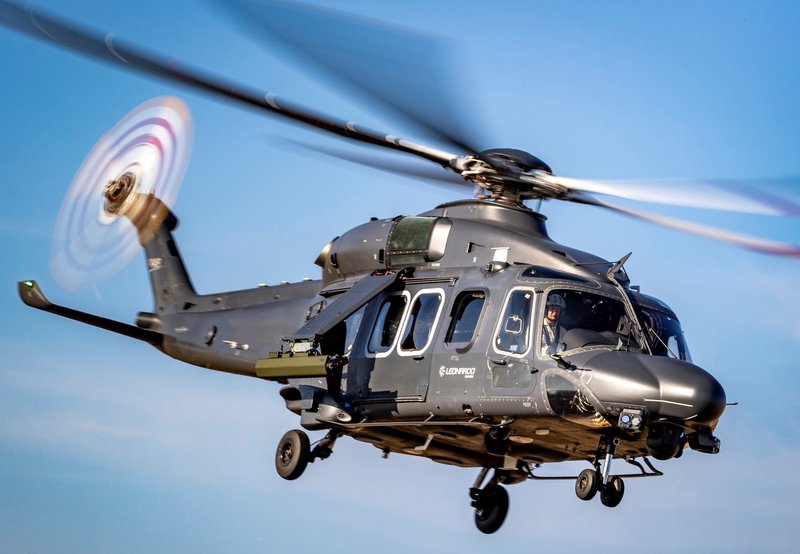The 5 most significant air stories of 2022
5. USAF budget request offers mixed results for F-35 and F-15EX fighters
The USAF's FY2023 defence budget request contains some surprises as it slows F-35 acquisition while accelerating F-15EX combat jet deliveries.

A total of 33 F-35A combat jets are being sought by the USAF for FY2023. (Photo: US DoD)
Despite the US Air Force (USAF) requesting a FY2023 budget of $169.5 billion, 8% higher than its FY2022 allocation, the service will seek to slow the pace of F-35 fighter jet procurement, attempt to expedite the rate of F-15EX aircraft production and force cutbacks to older fleets like the E-8C JSTARS and E-3 AWACS.
A total of 33 F-35A combat jets are being sought by the USAF for FY2023, 15 fewer than the total requested in FY2022. This drop in aircraft numbers particularly stands out when set against plans to acquire 24 F-15EX jets for $2.8 billion which, if passed by Congress, would dramatically accelerate production of the fourth-generation type after 12 units were requested in FY2021.
4. UK New Medium Helicopter field narrows as programme moves to next phase
The second half of the UK New Medium Helicopter competition is on. Airbus, Boeing, Leonardo and Lockheed Martin are required to provide more detailed proposals and to demonstrate domestic social and economic values of their offers.

The MoD launched the NMH programme in 2021 to invest in a new medium helicopter capability to replace the RAF’s ageing Puma HC2 battlefield helicopters. (Photo: Leonardo)
The UK MoD has revealed the four selected companies competing for its £1 billion ($1.15 billion) New Medium Helicopter (NMH) programme.
On 31 October, Airbus, Boeing, Leonardo and Lockheed Martin were informed that they had successfully passed the dynamic prequalification questionnaire (DPQQ) assessment and are moving on to the next phase of the competition.
The competitors are now waiting for the complete requirements to be released by the MoD, with the request for proposals expected to be issued later this financial year.
3. Northrop Grumman and US Air Force unveil B-21 stealth bomber
The B-21 Raider sixth-generation stealth bomber will form the backbone of future USAF air power, and it is set to deliver capability and flexibility through advanced integration of data, sensors and weapons.

The sixth-generation aircraft is expected to help the USAF to ‘penetrate the toughest defences for precision strikes anywhere in the world'. (Photo: Northrop Grumman)
Northrop Grumman and the USAF revealed the world’s first sixth-generation stealth bomber, the B-21 Raider on 2 December in California.
The B-21 joins the nuclear triad as a visible and flexible deterrent designed for the USAF to meet its most complex missions.
The sixth-generation aircraft is expected to help the USAF to ‘penetrate the toughest defences for precision strikes anywhere in the world', Northrop Grumman’s press release said. Six bombers are currently in ‘various stages of final assembly’ in California, according to the release.
2. Bell V-280 Valor wins FLRAA Black Hawk replacement contract
The US Army's Future Long-Range Assault Aircraft (FLRAA) contract awarded to Bell marks the US Army’s largest helicopter procurement in 40 years. Here is everything you need to know about the programme.

The Bell V-280 Valor design builds on the company’s experience in designing and producing the Bell-Boeing V-22 Osprey tiltrotor. (Photo: Bell Textron)
The US Army has made its decision in the competition to build the Future Long-Range Assault Aircraft (FLRAA), the service's largest rotorcraft procurement in 40 years.
The initial award for this element of Future Vertical Lift (FVL) capability is worth up to $1.3 billion and the V-280 design is set to replace around 2,000 Black Hawk utility helicopters from 2030.
FLRAA does not serve as a one-to-one replacement for the Black Hawk - it will take over the roles the Black Hawk carries out.
1. UK, Italy and Japan tie the knot with joint fighter project
Japanese involvement is key to the feasibility of the Future Combat Air System, bringing money and industrial might to the table.

A rendering of the Global Combat Air System future fighter jet flying over Japanese skies. (Image: BAE Systems)
The UK, Japan and Italy have announced a new partnership under the Global Combat Air Programme (GCAP) to develop a trilateral next-generation fighter jet.
The announcement follows joint-concept studies by Rome, London and Tokyo launched during this year's Farnborough Air Show in July.
The deal sees work on the UK-led Tempest Future Combat Air System (FCAS), and Japan's F-X future fighter programme come together.
More from Air Warfare
-
![Wedgetail rising as the aircraft continues to prove itself and wins fans]()
Wedgetail rising as the aircraft continues to prove itself and wins fans
The Royal Australian Air Force (RAAF) was the lead customer for the E-7 Wedgetail airborne early warning and control (AEW&C) aircraft and the platform has been ordered by several countries with platforms ordered by the UK, with the US and NATO also selecting the platform.
-
![Shield AI unveils V-Bat block upgrade]()
Shield AI unveils V-Bat block upgrade
The heavy-fuel engine V-Bat was officially showcased at Sea Air Space, after it was first teased in February 2025.
-
![Czech Republic confirms new Sweden offer on Gripen aircraft lease]()
Czech Republic confirms new Sweden offer on Gripen aircraft lease
The current lease period for the 14 Gripen C/D aircraft flown by the Czech Air Force will come to an end in 2027. This new offer proposes that 12 Gripen aircraft will be leased after 2027.
-
![US Air Force to test Northrop Grumman’s next-gen connectivity capabilities in the CJADC2]()
US Air Force to test Northrop Grumman’s next-gen connectivity capabilities in the CJADC2
NG InSight will be evaluated in support of the USAF Battle Network.
-
![USAF’s VENOM programme advances with modifications and autonomous testing]()
USAF’s VENOM programme advances with modifications and autonomous testing
The first fully modified aircraft is expected to begin testing by the end of 2025, according to the US Air Force.
























